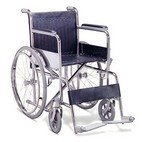In the previous post I spoke of how the muscle tension or tightness referred to as 'tone' cannot be reversed or even reduced to any great degree by exercise or stretching out. Regardless, I have notice some increased flexibility and range of motion after having returned to work.
In exercising you are usually given a motion which you repeat in say three sets of ten. Lift your leg up and down 10 times, rest, then repeat, etc. The motion is usually unidirectional (up and down - in-line and for a duration of usually minutes).
Having returned to work and an 8 hour workday, I find myself having to move through a wide range of motions continuously. Reaching for items I need, twisting at the torso, swiveling, stretching, grasping, bending - to the left, to the right, up and down. The continuous motions required are so much more than one can get during an hour in physio or at home, held captive by your TV.
Some increased motion range and flexibility has been noted. In addition I've had the occasional sensation I refer to as 'micro-tears' in my back which I believe are the adhesions breaking up or releasing. As discussed in a previous post I believe these adhesions are bonds formed between the various layers of tissue during the time of non-use or restricted use. Tissue layers normally slide smoothly across one another when stretching however, when paralyzed and movement does not occur for any length of time, the tissue components begin to bond to the adjacent layers. If and when motion returns the feeling might be analogous to two surfaces sliding against each other without any lubricant or grease to make the movement glide smoothly. With muscles I feel this sticky, ratcheting sensation where the muscle feels as if it alternately and rapidly slides, sticks, slides and sticks again. When walking I can feel sheaths of muscles move within the leg. In the back I have some of the same sensation but sometimes when extending some motion I have a momentary twinge - where I feel a minute tear as one of the adhesions releases.
In summation, I feel that the increased exertion and range of motion required in my workplace has translated into greater range of motion in my own movements. Tone will always be present in the muscles affected and will always oppose any attempt for the muscles to return to a normal 'pre-injury' state.
Again, these observations are not scientific, and explainations may not be totally accurate, but they are impressions that I have based on my own experience.
Sunday, 21 February 2010
Subscribe to:
Post Comments (Atom)







.jpg)

No comments:
Post a Comment